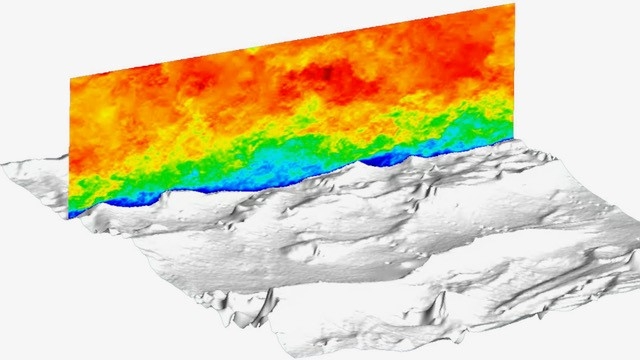Scott T. Salesky, an assistant professor of meteorology at the University of Oklahoma, is the principal investigator of a recently awarded $530,297 grant through the National Science Foundation’s Office of Polar Programs to study how katabatic winds – cold, dense winds flowing down a sloping surface – impact snow transport and ultimately contribute to the growth of the Antarctic ice sheet.
The study is a collaborative effort between Salesky and colleagues at Columbia University in New York. The NSF funding will allow the OU and Columbia researchers to conduct field work near McMurdo Station, a U.S. research station located on the south tip of Ross Island in Antarctica.
Katabatic winds, also called drainage winds, carry high-density air from a higher elevation down a slope under the force of gravity. Although katabatic flows are ubiquitous in alpine and polar regions, turbulent transport of heat, water vapor, momentum and particles (such as snow) are poorly understood in these flows, undermining the accuracy of numerical weather and climate prediction models.
Salesky said the study is important because, “the Antarctic ice sheet drives many processes in the Earth system through its modulation of regional and global atmospheric and oceanic circulations, storage of fresh water, and effects on global albedo and climate.” Albedo is a non-dimensional, unitless quantity that indicates how well a surface reflects solar energy.
“An understanding of the surface mass balance of the ice sheets is critical for predicting future sea level rise and for interpreting ice core records,” he said. “Yet, the evolution of the ice sheets through snow deposition, erosion and transport in katabatic winds, which are persistent across much of the Antarctic, remains poorly understood due to the lack of an overarching theoretical framework, scarcity of observational datasets, and a lack of accurate numerical modeling tools.”



